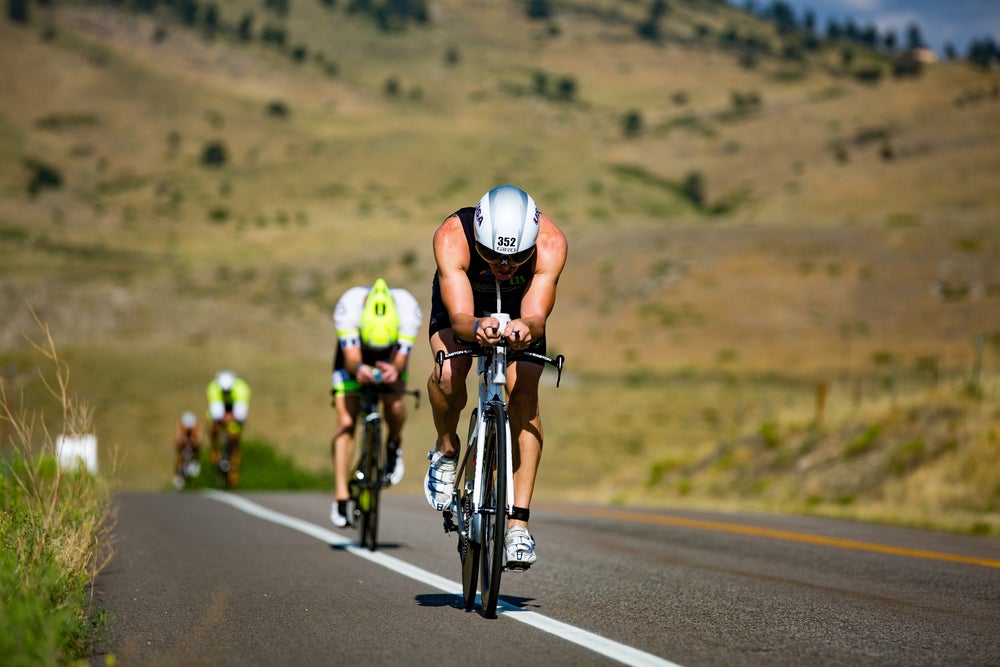Want To Increase Your Pain Tolerance?

Photo: Shutterstock.com
Compared to the general populace, multisport buffs are as tough as they come. There’s even research to back up that contention. To gain an understanding of what accounts for that tenacity, a new study sought to examine the important link between pain and performance. Indeed, those who are able to push harder and longer are usually the ones who end up atop the podium on race day.
Published in the European Journal of Applied Physiology, researchers had a group of cyclists perform sprint interval tests on bikes, giving them either 1.5 grams of acetaminophen (pain reliever, aka generic Tylenol) or a placebo prior to exercise. They then monitored their power output and heart rate during each sprint, finding that when they took acetaminophen, the participants had a significantly greater mean power output.
This backed up related research that involved 13 trained male cyclists performing a 10-mile time trail after taking acetaminophen or a placebo. In similar findings, they discovered that the participants were able to cycle at higher mean power outputs and finish faster when they took the acetaminophen. They concluded that their findings “support the notion that exercise is regulated by pain perception, and increased pain tolerance can improve exercise capacity.”
Now this certainly doesn’t mean that triathletes should start popping pills before workouts and races. Researchers simply relied on acetaminophen as an easy and quick way to mask pain in lab conditions. In real life, taking medication to cover up pain is a recipe for injury and should be avoided in most cases. The important takeaway from these studies is that a higher pain tolerance and increased performance go hand in hand. Luckily, with a bit of hard work, you can naturally boost that tolerance—and thereby performance—without running to the medicine cabinet.
“Athlete perception of pain is definitely a factor in performance, but you have to always remember that it’s a moving target based on an athlete’s health and training status,” says Will Kirousis, a USA Triathlon and USA Cycling-certified coach who serves as the co-director of Tri-Hard Endurance Sports Coaching in Massachusetts.
By this, he means that through training and experience in the sport, you can actually train yourself to have a higher pain threshold. Keep in mind, however, that there is a big difference between the pain and discomfort associated with hard racing and training, and that related to actual injuries. When it comes to the latter, there is no benefit to enduring through the hurt.
RELATED: Your Personal Pain Cave
Boost Your Pain Threshold
If you are healthy and looking to bump up your ability to withstand the discomfort associated with hard work, Kirousis emphasizes the importance of three types of workouts. Most applicable to your preparation for a goal race is simply to schedule “practice” lead-up races early and mid-season to get your legs and lungs working harder than they might in regular workouts. “Doing a few specific training races in the build-up to your main event for the year is invaluable,” he says. “You get to practice in the atmosphere of the race and you raise the bar performance-wise to the highest level you can on that day.”
Another important way to build your pain tolerance is through high-intensity workouts like hard interval training. “These workouts are intense, have clear goals, and work great to stretch fatigue-based pain threshold, assuming they are done in a training environment that emphasizes recovery and freshness overall,” Kirousis says.
While it may sound counterintuitive, it’s also vital to increase your pain tolerance during recovery. “If you aren’t fresh, you don’t have the emotional reserve to move your pain threshold during a race or workout,” he explained. “If you are focused on suffering all the time, you get tired and have no reserve, which lowers pain threshold.”
Put simply, to increase your tolerance for pain, you need to implement increasingly more difficult workouts. With that said, if you aren’t rested enough to withstand those tougher sessions, you’ll always be logging sub-optimal workouts, which won’t contribute to overall performance improvements. By following a smart training plan with strategically scheduled hard workouts and recovery days, you’ll notice over months (and years) you’re able to handle more than you perhaps ever thought possible.